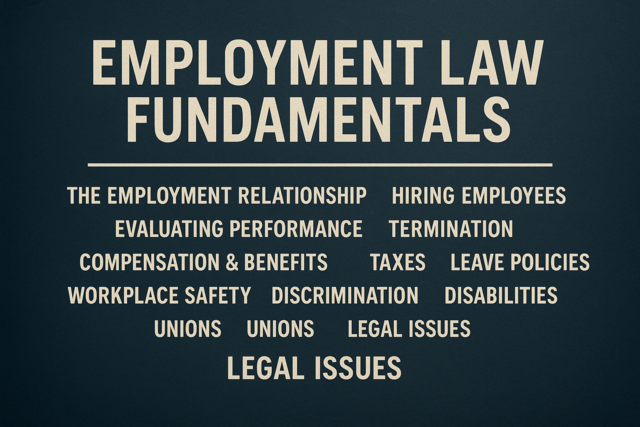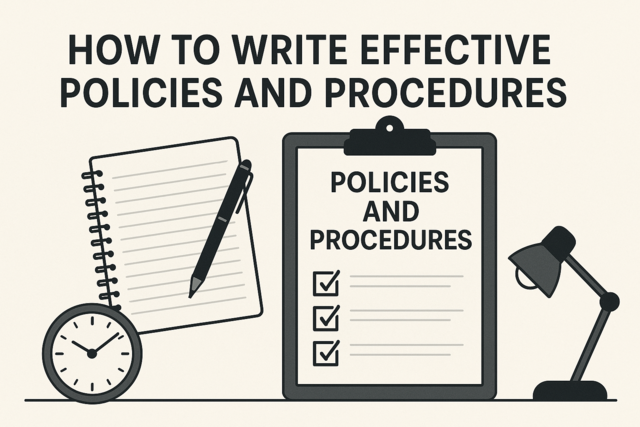A person's motivation can come in the form of a need, a desire, or a goal. In some situations, the stronger the motivation to do something, the more likely a person will do it. There is a psychological connection between action and motivation, with researchers and psychologists developing dozens of theories over the years.1 Years of studying motivation has generated quite a bit of knowledge and material that has proven to be quite valuable for society.
Motivation and business are two things that seem to go together quite smoothly, and this extends to organizational behavior as well. This article will look at the role that motivation specifically plays in the business work through organizational behavior and what businesses can do with it. This will include looking at engagement, identifying the types and sources of motivation, and how to give a healthy boost to employee motivation.
How Motivation Works in Organizational Behavior
- Career Aspirations-People choose their specific careers often because they have an interest in that area that doesn't involve money. They may have a specific goal in what they want to accomplish in their lives that a career can give them. Not all professions are financially lucrative, so money isn't always the end-all, be-all motivation for work. A person may stick with a job and put effort into it because of their career aspirations; a lower-level position may be a stepping stone to where they want to be.
- Enjoyment-A person may also be motivated to do good and work hard in their job because they genuinely enjoy it. Maybe they have fun doing it. Maybe there is some kind of social reinforcement where they regularly get praise for their good work, which can be an incredibly powerful motivator.2 Maybe they just do the job for the sake doing the job, which generates some kind of satisfaction. In any case, there does seem to be some truth behind the idea that a person should work in a field that interests them or gives them some kind of enjoyment.
- Stability and Independence-It can be exhausting when things in a person's life become unpredictable. When that happens, things that are familiar like routines tend to become attractive amidst the chaos. In many cases, a regular job can provide that much needed stability in a person's life. Depending on what is going on at home, that can be a valuable motivator for them. There is also a sense of independence that work certain professions give. Employers who give their employees a bit of autonomy tend to find that they are much more satisfied and focused on their work than when they're constantly being observed by a supervisor.3
- Socialization-Humans are, by nature, social creatures. This is applicable for both introverts and extroverts; the desire to interact with others just presents itself differently. Interacting with colleagues and clients at work is a type of socialization, just one with a professional undercurrent. The effects are still the same, as many people exhibit a boost in attitude, mood, and performance when they have positive interactions with their peers.4 It's one of the reasons why employers should take note of who they are pairing together for group assignments, as those effects of socialization are more likely to occur when the people working together actually get along in the first place.
Identifying Motivators
In order to motivate you staff members, you first have to identify what motivators are already in play. It's not as simple as presenting them with a random reward and telling them what they have to do to get it. There is the possibility that the employees may be motivated by something their employer can't provide, or that they are not going to communicate outright what drives their performance. An employee's motivation may not be something that anyone can have control over in the first place.
In most cases, motivation falls into one of two categories: extrinsic or intrinsic. Extrinsic motivation is also referred to as external motivation and can include things like money, praise, and reputation.5 These are the standard known rewards that can be provided from others, i.e. a person cannot create them on their own. Intrinsic or internal motivation and rewards are the opposite, focusing on more on doing something for the sake of doing it than to get something from someone else.6 The rewards from intrinsic motivation can only be experienced by the individual and can manifest psychologically more than physically. An example would be emotions like satisfaction and pride; basically feeling better because you did something.
Businesses are going to have more of a focus on extrinsic motivators than intrinsic ones, simply because they can offer more control over the situation and intrinsic motivators cannot be easily measured. The employees themselves may have intrinsic motivators that drive their work that operates in tandem with extrinsic motivators that their employer provides for them. Once a business and its staff have determine the type of motivation, they can actually begin to identify their motivators. To do so, three questions need to be answered:
- What Do You Want To Do?-Basically, you cannot identify your motivation to do something if you don't know what you want to do. This can be answered by setting long- and short-term goals in the business and then looking at why you choose those in the first place.
- How Are You Going To Do It?-Part two: how are you going to meet the goal(s) you set? Look at what options are available and how feasible they are for you. The nature of the goal(s) in question may also limit the options at your disposal.
- When Are You Going To Do It?-Every goal has some kind of timeline attached to it, whether by your own choosing or not. In business, there's usually a deadline associated with the goal/task in question that provides this answer.
For these questions, a person often has to look at why behind each of their answers in order to make a decision. That reasoning is, typically, the person's motivation for that particular task. In this sense, the motivation shapes all the other parts of a person's behavior in what they are trying to accomplish. If the motivation isn't strong enough, or doesn't match up with the other components of the situation, then that will be reflected in the person's work. This can be applied to tasks and goals set by individual employees, groups, or the business as a whole.
What is Engagement?
When discussing motivation, the concept of engagement is usually brought up as a means of aiding existing motivators in order to generate the best possible results. Also called employee engagement, it involves setting up the conditions in the workplace to best benefit the staff and prompt them to give their best effort in their tasks while improving their well-being at work.7 Engagement works best when there is an established atmosphere of trust and communication between employers and employees; without it, engagement will not be as efficient of a practice as you may want it to be.
In organizational behavior and business, engagement carries a lot of importance. This is, by far, one of the most valuable tools businesses have for improving their organizational behavior and the culture of their business. For the most part, it's also the easiest way for employers to show that they genuinely care about their employees and want to do right by them. Businesses that practice engagement tend to find that their ability to attract and retain employees is noticeably better than those of their competitors that don't. About a quarter or more of the workforce is at risk of turnover because employers are not giving them enough reasons to stay, regardless of the employee's performance or skill.8 Some industries are more prone to high turnover rates than others, and the businesses in those fields tend to be prepared for that from the start. However, most businesses are not and will find that their production and quality will struggle under high turnover rates.
For the most part, employers can begin to practice engagement by simply putting in the time and effort to improve things for their employees in the workplace. It doesn't have to be complicated-although there are some employee engagement tools and strategies that do go a bit overboard. As an employer, you may have to look at other parts of your business' organizational behavior -the business' culture, diversity, perception, and attribution. Past attempts to generate engagement may have been hindered by issues present in these aspects, which may require adjustments before implementing any engagement plans. Problems in policies and ethics practices may also be an issue and should be checked out-which you should do anyway to keep things up to date.
How To Boost Engagement and Motivation
When you take the time to specifically make improvements to employee engagement or motivation in a business, you often end up aid both concepts. The two are connected enough that any attempts to assist one benefits the other. As mentioned previously, increasing engagement and motivation do not have to be complicated so long as the employers (and management) take the time to do so. Quite simply, if you don't put in the effort to take care of your employees, don't expect them to take care of their work. That being said, here are some fairly simply ways to boost engagement and motivation in your business' organizational behavior.
- Communicate-Communication is more than simply holding a conversation with your employees, but actually responding to their concerns and being clear when you connect with them. Talking with your employees in person rather than through an email, or on an individual basis, can help encourage positive behavior in their work. By interacting with their superiors in a friendly and direct way, it presents to your employees that you actually know and care about their needs and concerns in the business.
- Offer Opportunities-Providing your employees with a goal can give them a new source of motivation in their work. Opportunities can include things like new benefits, training, and the chance to advance in the business.9 These opportunities can appeal to employees personally and professionally, depending on the details. It should be noted that there is a balance to achieve in offering opportunities, as too many at once will come across as handout and too few can prompt some hostile competition amongst co-workers. Space them out and advertise them within the company to make sure that everyone is equally aware.
- Mind Your Manners-A simple "thank you" goes a long way for some people and a lot of people tend to forget it in their day to day. Practicing basic manners when interacting with your employees is not only a polite thing to do, but also a sign of respect and professionalism. Expressing gratitude can also communicate to your employees that you support them and acknowledge their work for the company.10
- Flexibility and Authenticity-Remember that your employees are human and that they should be treated as such. Being authentic in your relationship with your employees (and your peers) can do just that. It builds a positive rapport and builds trust throughout the staff. You should also allow them some degree of freedom and flexibility in their work, which will also show that you trust and respect them as your employee. That added flexibility can also help them be more productive, as not everybody thrives in a fixed schedule or environment.























